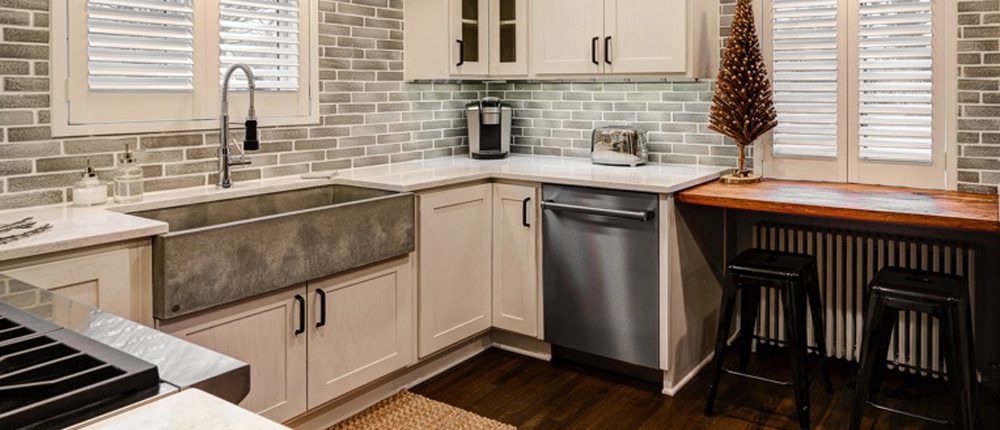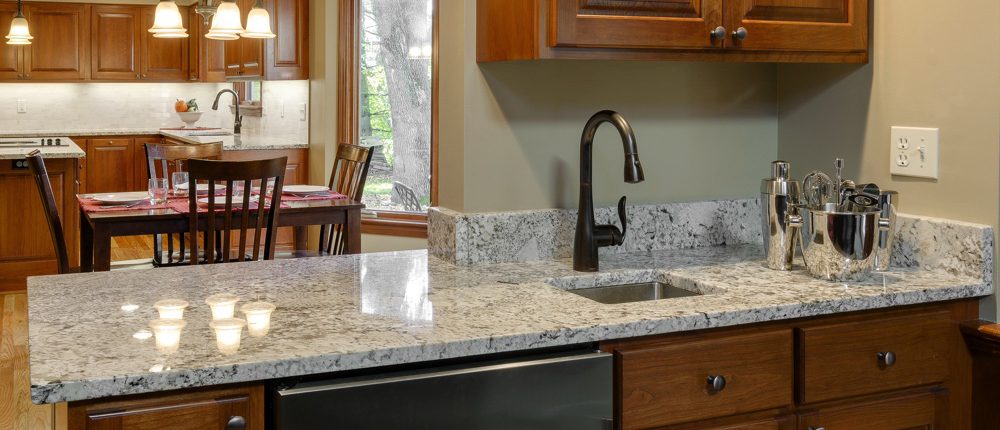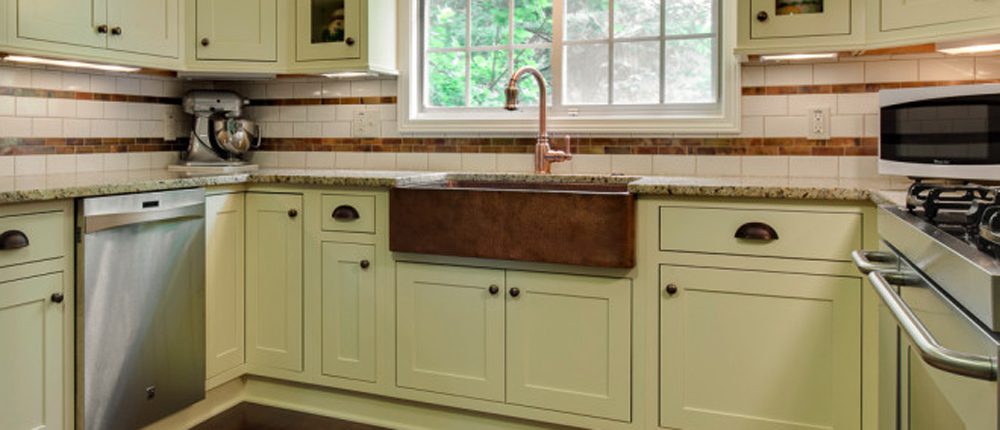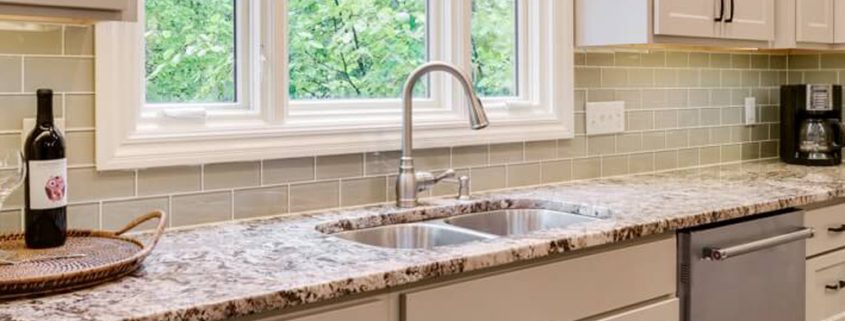Choosing the Right Kitchen Sink
There are many aspects to consider when choosing a new kitchen sink. If you spend a lot of time in your kitchen, then it’s best to choose a sink that supports your needs and not just one that suits a certain style.
General Considerations
Before you even start thinking about the material or design of your new sink, you need to consider its place in your kitchen and in your life.
What sorts of tasks do you perform in your kitchen sink? Are there limitations on space or location that might impact your sink choice? For example, you might want the sink and dishwasher in close proximity, or you might have to lose cabinet space to vastly expand sink size. Who will be using the sink? If you have any exceptionally tall folks in your household, there are certain designs you might want to avoid. (More about that later.) And be sure to think about your current sink and what you like or don’t like about it.

Material
From metal to stone, kitchen sinks can be constructed using a variety of materials. When weighing options, you should consider material cost, its ease of cleaning, and whether the material fits in with the overall style of your kitchen. Here are some of the options.
- Stainless Steel: This is the most popular material for kitchen sinks, as it’s easy to clean, can handle a variety of finishes, and fits many kitchen styles. Water spots can be a nuisance however, and some cheaper stainless steel sinks can be quite loud.
- Porcelain: For traditional or vintage kitchens, you may opt for a porcelain sink. They come in many colors, giving you more flexibility in your decor, but they need to be treated gently as porcelain is easily prone to chipping and scratching. It’s not appropriate for a kitchen sink that sees a lot of action.
- Composite: Kitchen sinks made of composite material are quite durable. They’re resistant to scratches and chips and they don’t show water marks. They can be molded as an extension of your counter top. Unfortunately composite sinks are more expensive than many of the other alternatives.
- Cast Iron: Sinks made from cast iron are also durable and less noisy than others, but they’re quite heavy. Like with porcelain, they come in a variety of colors.
- Natural Stone: Natural materials are popular in modern redesigns. While natural stone kitchen sinks may look stylish, they’re susceptible to scratches, chips, and stains. They can be rather expensive, and they require a lot of maintenance, such as regular sealing and special cleaning products.
- Poured Concrete: Scott Hall Remodeling created the apron-front poured concrete sink shown below. Poured concrete is an inexpensive, forgiving material, making it great for custom kitchen sinks. You can choose size, shape, color, and surface texture. Like with natural stone sinks, poured concrete will need some TLC from time to time. It will show wear, as it’s easy to scratch and nick, and it must be treated regularly to prevent staining and discoloration.

Configuration
When it comes to sink configuration, there are only so many options. Your decision about which to choose will likely rely on overall sink size and how you typically use your kitchen sink.
- Single Basin: A sink with a single open basin allows you to fit more into the sink at once, which comes in handy for washing larger pots and pans, as well as bathing small pets. This is becoming a more popular configuration over two-basin sinks.
- Two Basin: A kitchen sink with two sections can allow you to separate tasks, like draining pasta on one side while soaking dishes on the other. You can choose between equal size basins or ones of varying sizes and depths.
- Triple Bowl: This uncommon sink configuration features two large sections with a small one for prep.
Before locking yourself into a kitchen sink configuration, consider the various kitchen gadgets on the market as well. There are organizational tools, like over-the-sink colanders and caddies that can temporarily turn a single-basin sink into a multi-functional prep space.

Style
Design ebbs and flows, and some styles stand the test of time better than others. Are you remodeling your kitchen with the intention of spending another 20 years in the house, or are you thinking of selling? Remember: style isn’t just about how something looks, but also how it functions.
- Farmhouse: Also known as apron-front, these single-basin sinks are deeper and wider than most. They can give a vintage vibe, but they can also be made in a variety of materials. They’re great for washing larger items, but as mentioned earlier, they can be a literal pain-in-the-back for taller people. You’ll lose a little big of cabinet space as well because of the depth of the sink.
- Self-rimming/Drop-in Sink: As the name implies, a self-rimming sink is dropped into a cut-out in the counter top, and the lip rests on the counter top (which can collect gunk if not cleaned regularly). They’re less expensive than undermount sinks and easier to replace, but they eat up a little extra counter space because of the rim.
- Undermount: As shown in the photo above of the prep sink, undermount kitchen sinks create a seamless look from counter top to sink. They’re attached underneath the countertop, making them more difficult and usually more expensive to install. They’re easy to clean and give you a bit more counter space than a drop-in sink, but the faucets have to be attached to the counter or the wall.
- Integrated: As mentioned with composite material, sinks can be custom-formed as an extension of your counter top. This only works with certain materials, such as quartz, granite, and concrete.

Contact Us!
If you’re considering remodeling your kitchen, please contact us. Scott Hall Remodeling was recently ranked as one of the top kitchen remodeling contractors in Columbus, Ohio. Using our years of experience, we can help make your kitchen vision come true!











